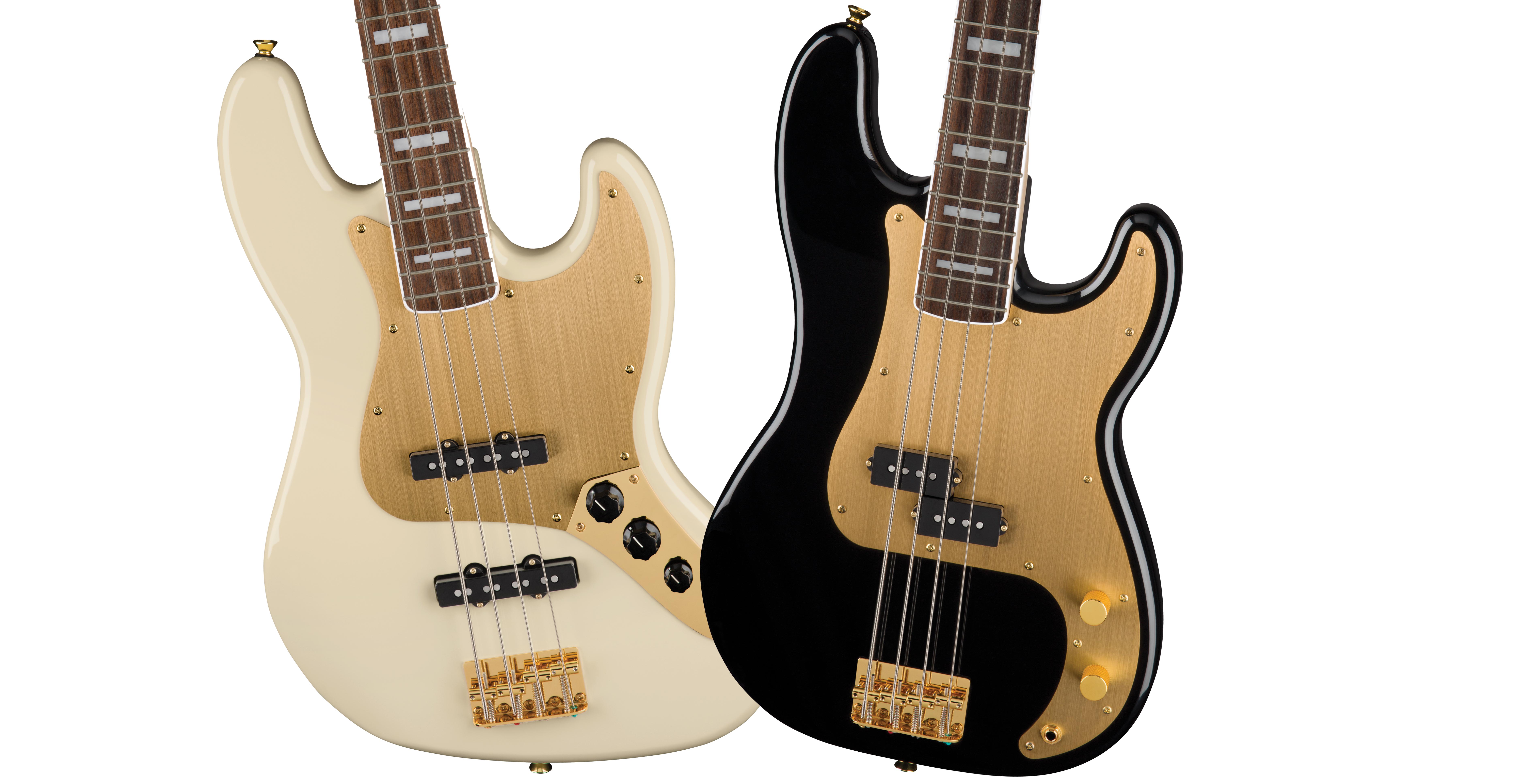Guitar World Verdict
A fitting tribute to Squier’s amazing success: they may be a bit pricey for Fender’s sub-brand, but these basses play and sound the business.
Pros
- +
Fabulous looks.
- +
Refined, powerful sounds.
Cons
- -
Alder rather than Nyatoh bodies would have been preferable. These basses are expensive for Squiers.
You can trust Guitar World
At the dawn of rock and roll, if you wanted a bass guitar, you had to buy a Fender. There wasn’t really any other choice. Leo Fender had been first out of the blocks back in 1951, and the brilliance of his design meant that no-one else seriously competed for years.
By the start of the ’80s, however, dark clouds were gathering over Fender after a perceived decline in quality following the sale of the brand to CBS. Even more seriously, a couple of Japanese companies – most notably Tokai – started producing inexpensive but accurate copies of Fender’s guitars and basses from the pre-CBS glory days.
Something needed to be done, so Fender brought in a new management team, who decided that the only way to deal with this problem was to produce their own high-quality but inexpensive guitars and basses. They would manufacture them in Japan, where production costs and skilled labor were lower, and they would market them under the Squier name, a company that Fender had acquired back in the ’60s.
The strategy worked, and although Fender were now in effect competing with themselves, the Squier range of guitars and basses has been in constant production ever since. All that was 40 years ago, and to mark the occasion, Squier have released Gold Editions of these very special – but as ever, affordable – P and J basses.
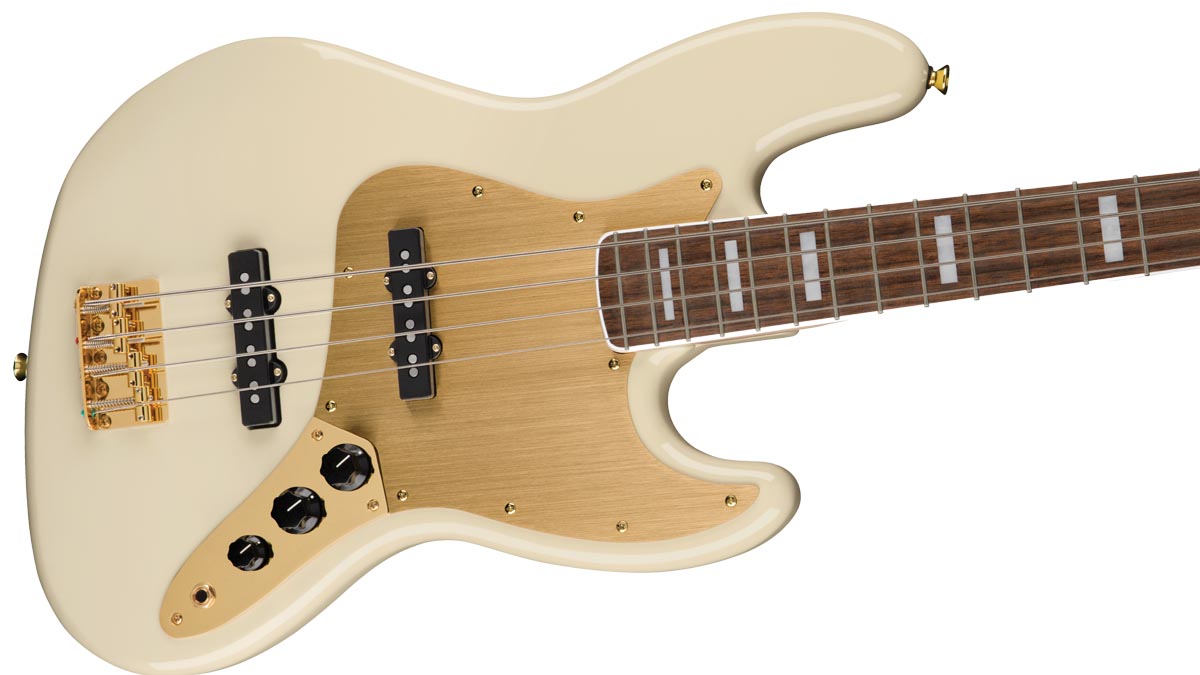
Build Quality
The construction and materials are similar for both the Precision and the Jazz, so let’s start there. The first thing to notice is that the bodies of these basses are made from nyatoh, a trade name for a number of species of softer nato wood. It’s a good choice, as it’s inexpensive, fairly sustainable and grows locally in Indonesia, where these basses are made.
Having said that, I’m not entirely sure why Fender didn’t opt for using poplar, a tonewood used on many of their early basses that has a beautifully warm but focused tone. They use it on several other guitars in the Squier range, even on cheaper instruments – so why not on these? It can only be down to economics.
The gold hardware on the Jazz gives the bass a whiff of custom extravagance, especially on the white bass that we have here
Talking of which, the fretboard on both the Jazz and Precision is Indian laurel. No complaints there: it’s a dark chocolate brown and is almost indistinguishable from rosewood. The maple used for the necks looks good too, with just a few flecks of color and grain irregularities to distinguish it from the flawless timber used for the most expensive Fender basses.
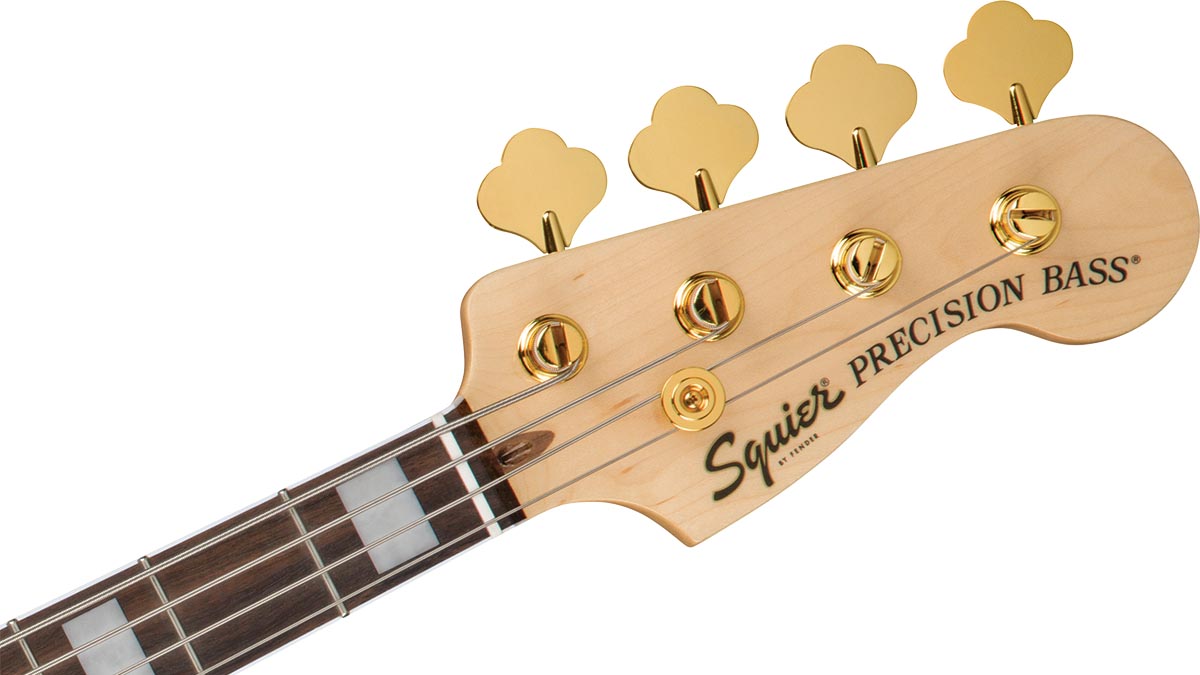
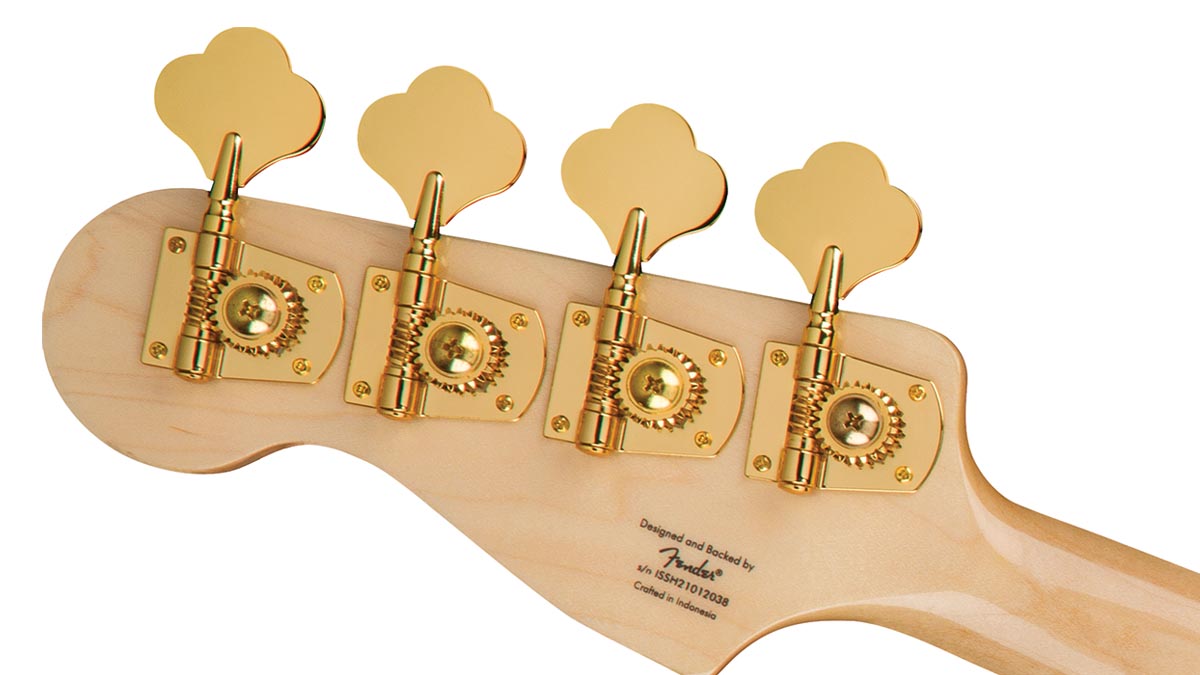
The machining tolerances are as you’d expect for modern, factory-produced instruments, with tight neck pockets and tidy routing for the truss rod channel and under the pickguards. Overall the paint and neck lacquer finish on both basses is expert: perhaps it’s a little too glossy on the back of the neck for my own taste, but it has been evenly applied and polished back.
For me, the gold hardware works better on the Jazz than the Precision. I’ve always felt that there’s something enjoyably workmanlike about a Precision bass, and I’d prefer it with chrome or better still, nickel hardware.
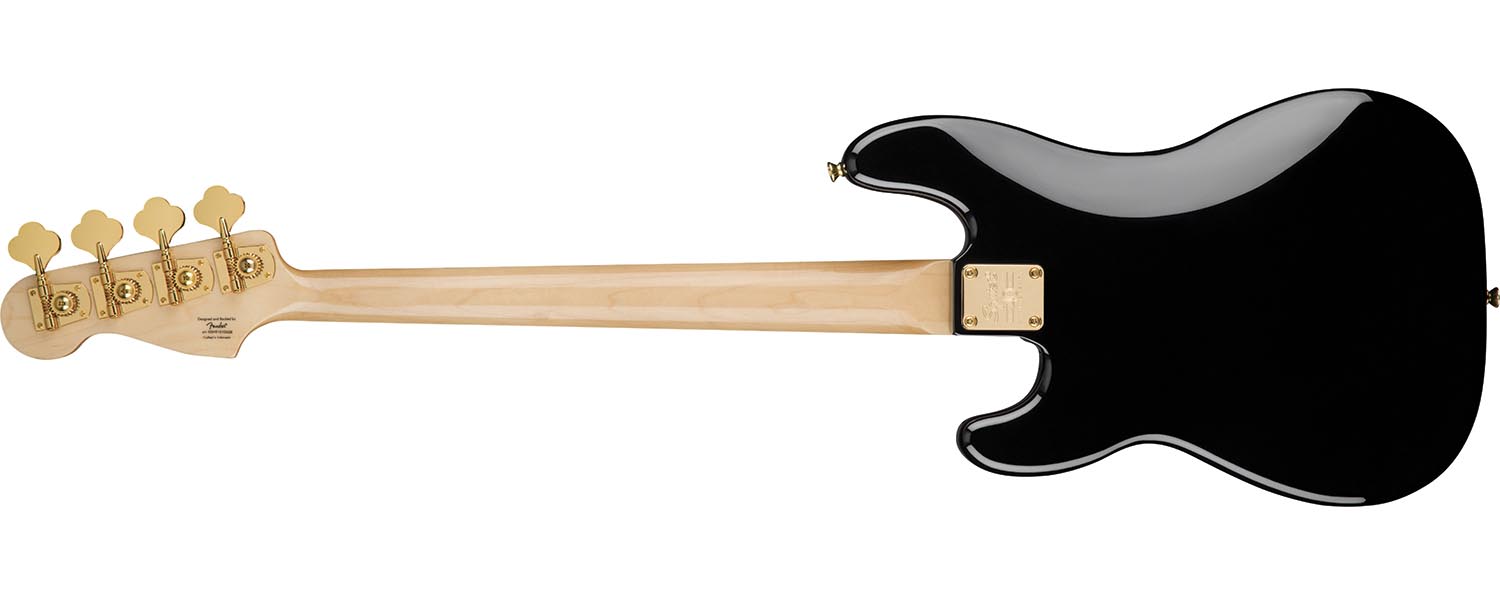
On the other hand, the gold hardware on the Jazz gives the bass a whiff of custom extravagance, especially on the white bass that we have here. Similarly, I’d prefer to see dots rather than block fret board inlays on the Precision, although I have to admit that the pearloid blocks are perfectly inlaid and do look good on both.
The back of the headstock proudly states ‘Crafted in Indonesia’, and they’re right to be proud. The construction, materials, and finish are excellent.
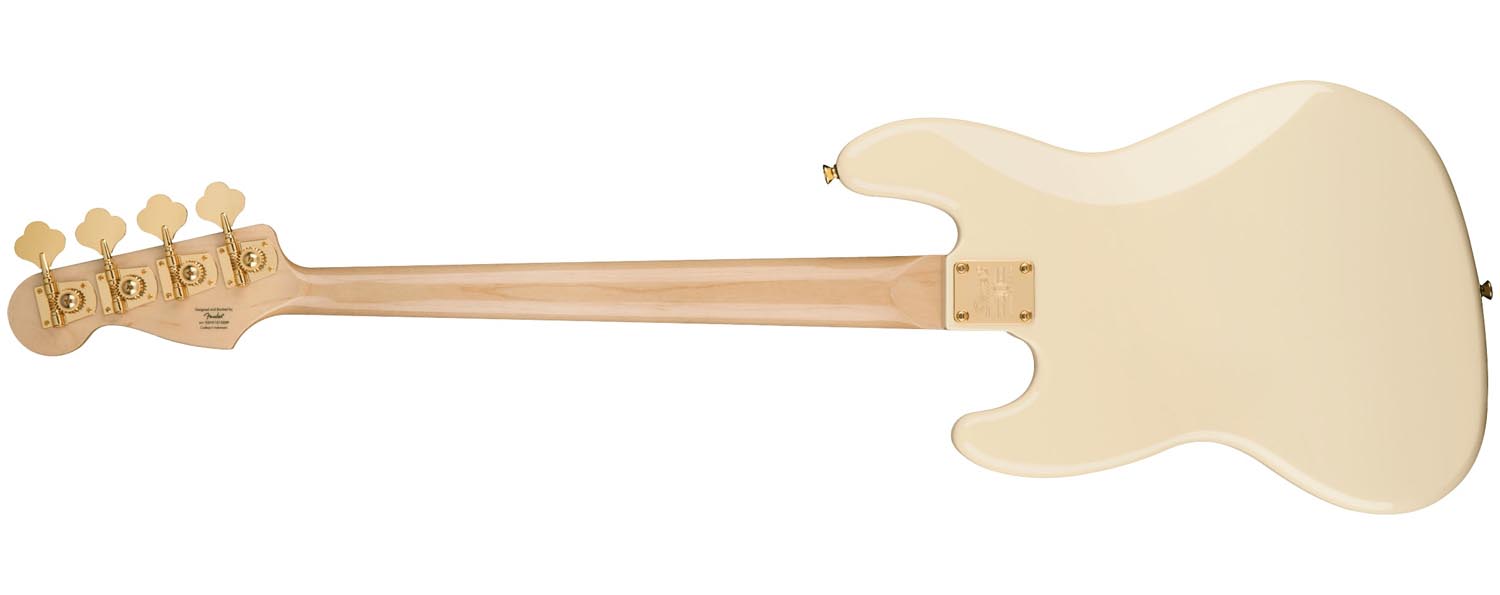
Sounds And Playability
It’s almost impossible to plug in and play these basses for the first time without a whole range of preconceptions and expectations. To analyse them as objectively as I can, I’ll start with the Squier Precision and compare it with two other P-Basses – an original ’64 and a more recent early-2000s model.
Before that, though, I need to give the truss rod a bit of a tweak, as the neck needs a little more relief to prevent buzzing from the new strings. I’m guessing the bass didn’t leave the factory like this and has probably moved slightly in transit. That done, and the action adjusted, it plays like a dream.
The C-profile neck is about 3mm narrower at the nut than my older Fender P, but it’s super-comfortable and fast to play, helped no doubt by the high standard of fret finishing and edge binding.
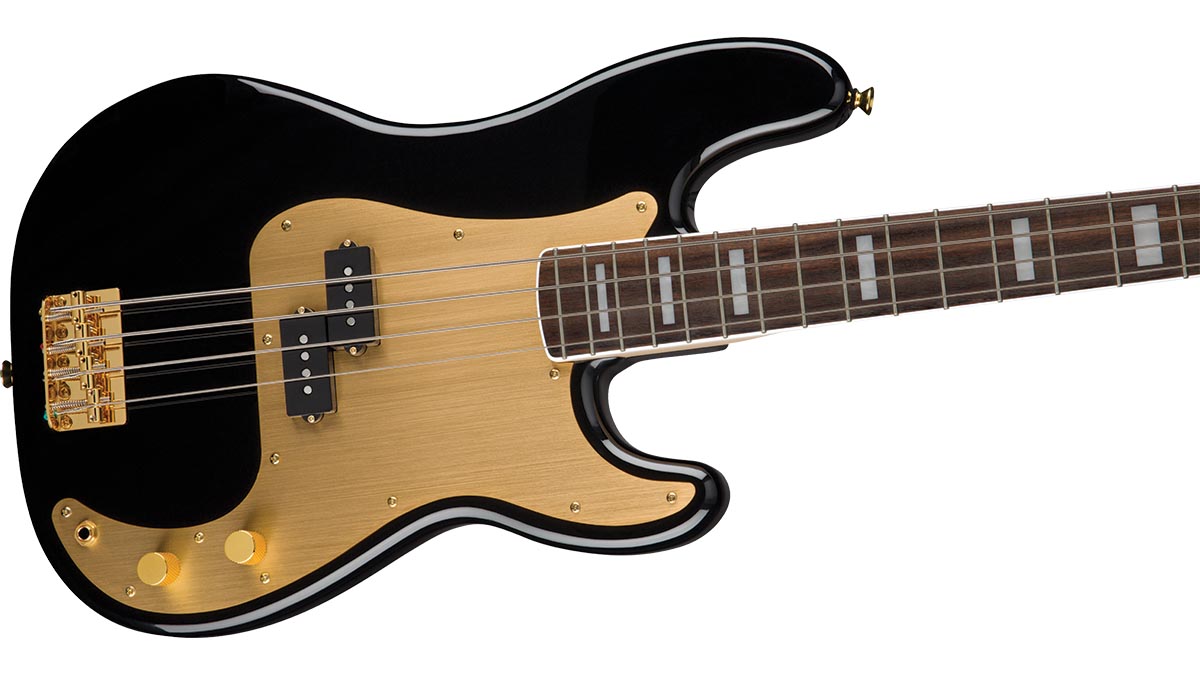
If I had to use one word to describe the sound of the Squier Precision, it would be ‘authentic’. It’s loud and proud, and in a straight fight with my 20-year-old Fender P, easily holds its own, with even more of a snarling clang to the top-end. Very impressive.
The Squier Jazz feels substantially weightier than the Precision – in fact, it’s exactly a pound heavier. It feels and looks like a high-quality instrument, and it sounds great too: The two tone controls are smooth to use and work with a predictable, even effect on the pickup sound. All the classic Jazz bass tones are present and correct, with a particularly impressive, zingy top end which will make this a slapper’s dream.
It’s perhaps a tiny bit light on the very low end, but this may well be down to the relatively higher density of the body timber on this particular bass. Overall, though, it sounds great, and exceeds expectations for a Jazz bass at this kind of price.
Conclusion
The big question here is, ‘Are these basses as good as their Fender counterparts – and if so, is there any point in spending at least twice as much on the original?’
For the first part, I’d have to say no – but only just. It’s a close call, but the quality of materials and hardware aren’t quite up to the very high standards of Fender’s finest. As for the second part of the question, the answer to that is much more nuanced.
After all, buying a Precision or Jazz with the Fender name on the headstock is often an aspirational, emotive process. Jaco played a Fender, Jamerson played a Fender – but can you name a classic bassline that was recorded on a Squier? Neither can I.
Still, these things matter more to some people than others – and if history and legacy aren’t your priorities, then congratulations! You can buy a great bass at a fraction of the cost of its Fender equivalent.
Specs
Squier 40th Anniversary Vintage Precision Bass
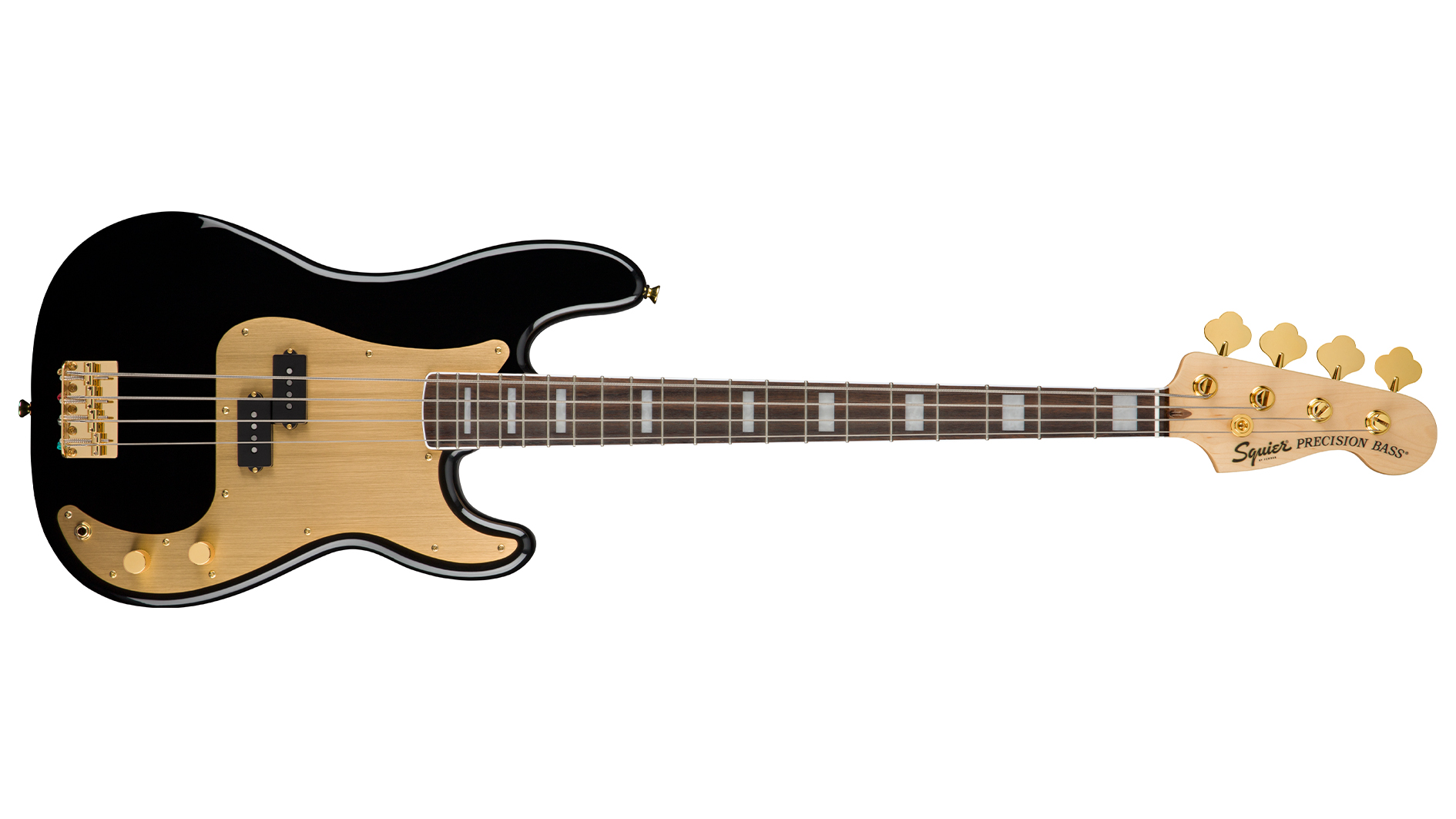
- PRICE: $599 / £429
- MADE IN: Indonesia
- BODY: Nyatoh
- NECK: Maple, 34” scale
- NECK JOIN: Bolt-on
- NUT WIDTH: 43mm (38mm)
- FINGERBOARD: Indian Laurel
- FRETS: 20 tall narrow
- PICKUPS: 1 x Alnico split single-coil (2 x single coil)
- ELECTRONICS: Passive
- CONTROLS: Volume, tone (front pickup volume, bridge pickup volume, tone)
- HARDWARE: Fender, gold-plated
- WEIGHT: 8.4 lbs (9.3 lbs)
- LEFT-HAND AVAILABLE? No
- CASE/GIGBAG INCLUDED? No
Specs
Squier 40th Anniversary Vintage Jazz Bass
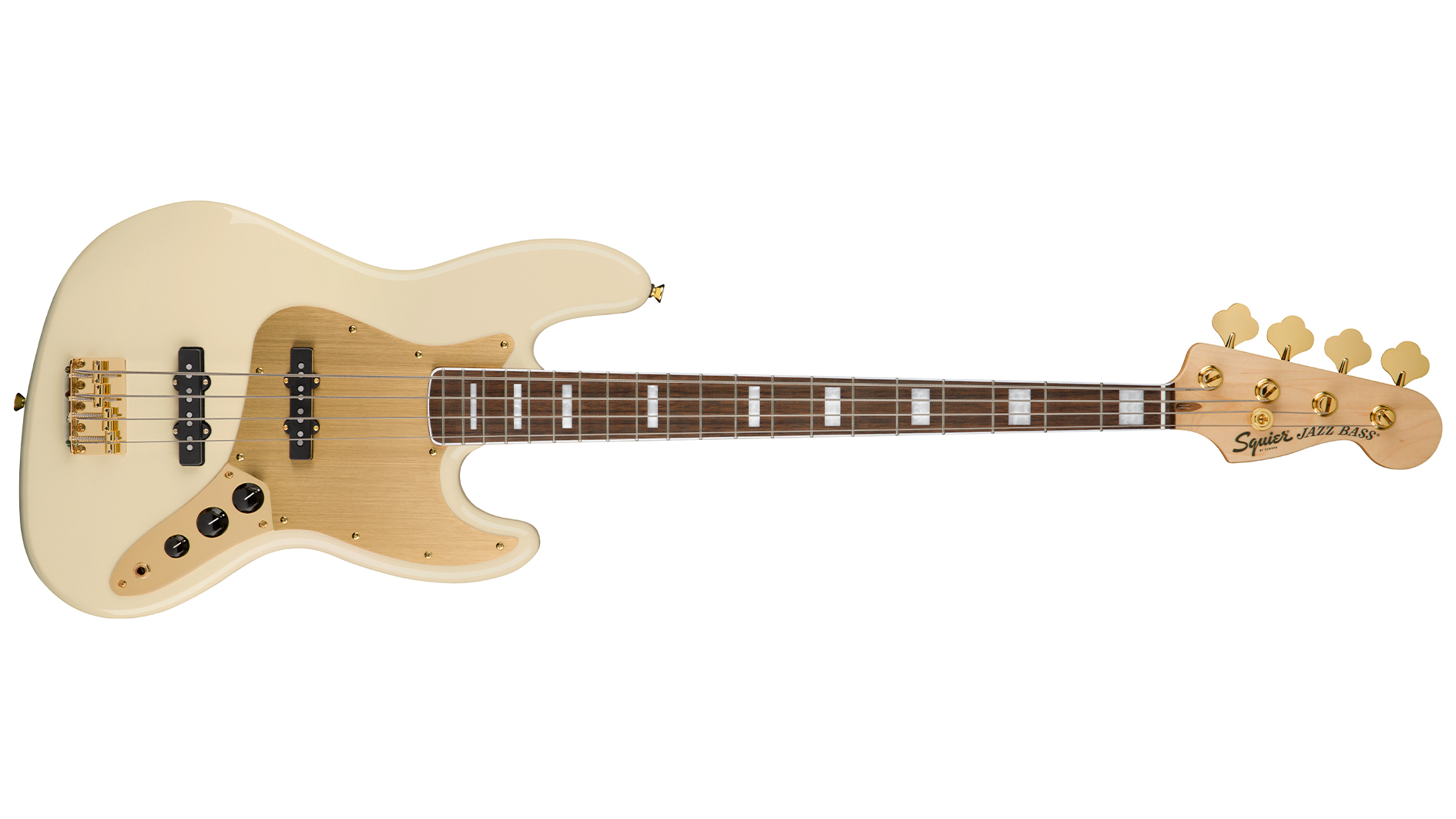
- PRICE: $599 / £429
- MADE IN: Indonesia
- BODY: Nyatoh
- NECK: Maple, 34” scale
- NECK JOIN: Bolt-on
- NUT WIDTH: 43mm (38mm)
- FINGERBOARD: Indian Laurel
- FRETS: 20 tall narrow
- PICKUPS: 1 x Alnico split single-coil (2 x single coil)
- ELECTRONICS: Passive
- CONTROLS: Volume, tone (front pickup volume, bridge pickup volume, tone)
- HARDWARE: Fender, gold-plated
- WEIGHT: 8.4 lbs (9.3 lbs)
- LEFT-HAND AVAILABLE? No
- CASE/GIGBAG INCLUDED? No
“An esoteric boutique vibe, superb ergonomics and a powerful, unique preamp – Tobias is back”: Tobias Growler IV review
“Affordable versions of the three best basses I've ever held in my hands”: Sterling by Music Man completes its trilogy of Joe Dart signature models with a trio of made-to-order basses that cost less than $500
